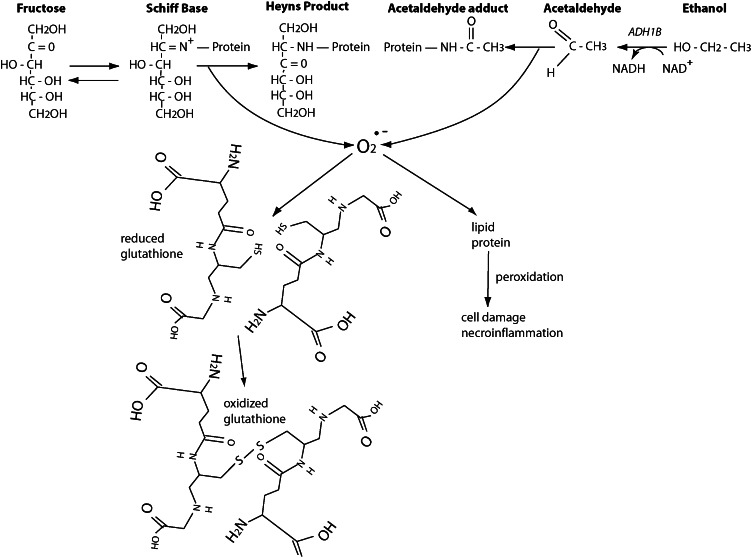Figure 4.
Generation of reactive oxygen species (ROS) by fructose or ethanol. Fructose first forms an intermediate Schiff base with the ε-amino group of lysine, which then spontaneously hydrogenates to form an irreversible Heyns product (hydroxyamide linkage or fructose adduct), termed the Maillard reaction. The heat of formation of this reaction is −19 kcal/mol and is therefore exothermically favorable. Each protein fructation generates 1 superoxide radical (O2•−), which must be quenched by an antioxidant (such as glutathione with its reduced sulfhydryl groups). Conversely, ethanol is metabolized by alcohol dehydrogenase 1B (ADH1B), generating NADH, to acetaldehyde, which then participates in the same Maillard reaction to form acetaldehyde adducts, with generation of superoxide radicals that must also be quenched by antioxidants. In the absence of adequate antioxidant capacity, ROS production leads to peroxidation, hepatocellular damage, necroinflammation (nonalcoholic steatohepatitis), fibrosis, and ultimately cirrhosis. Reproduced from (59) with permission.

